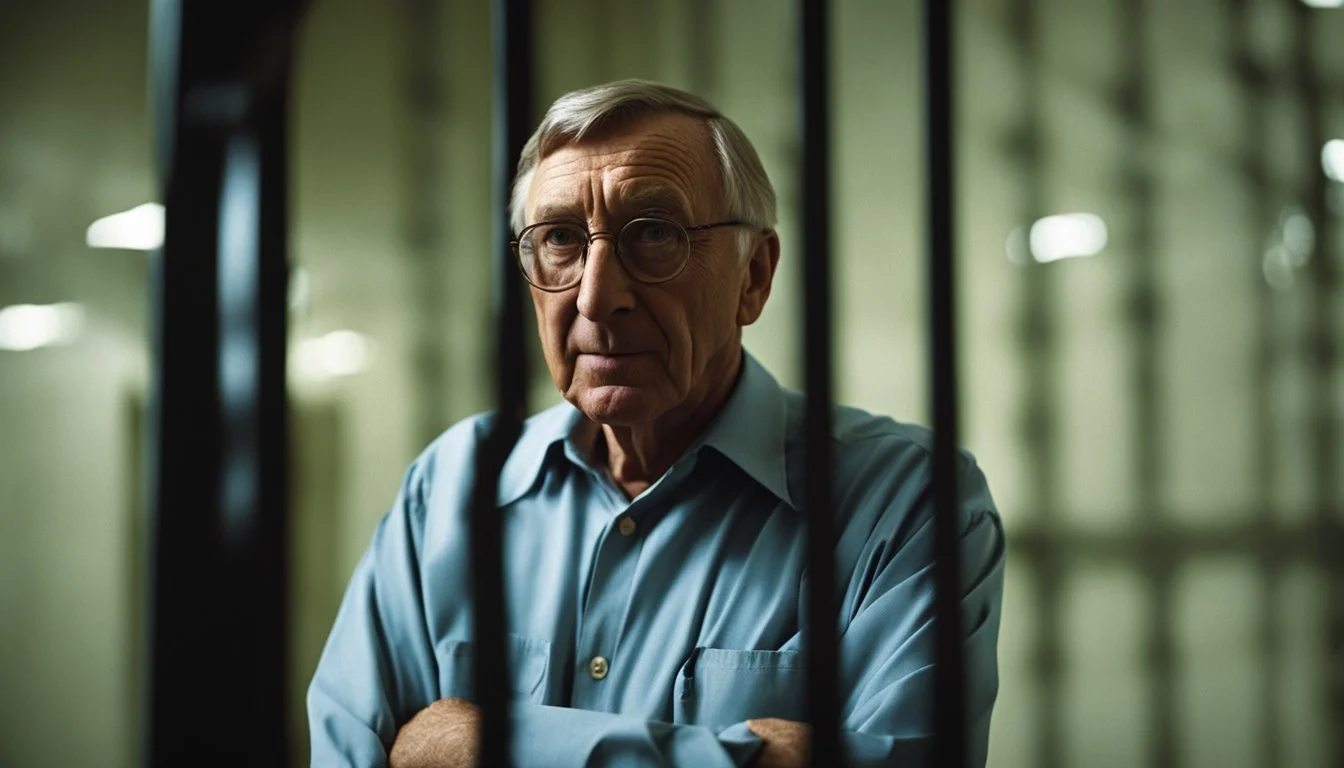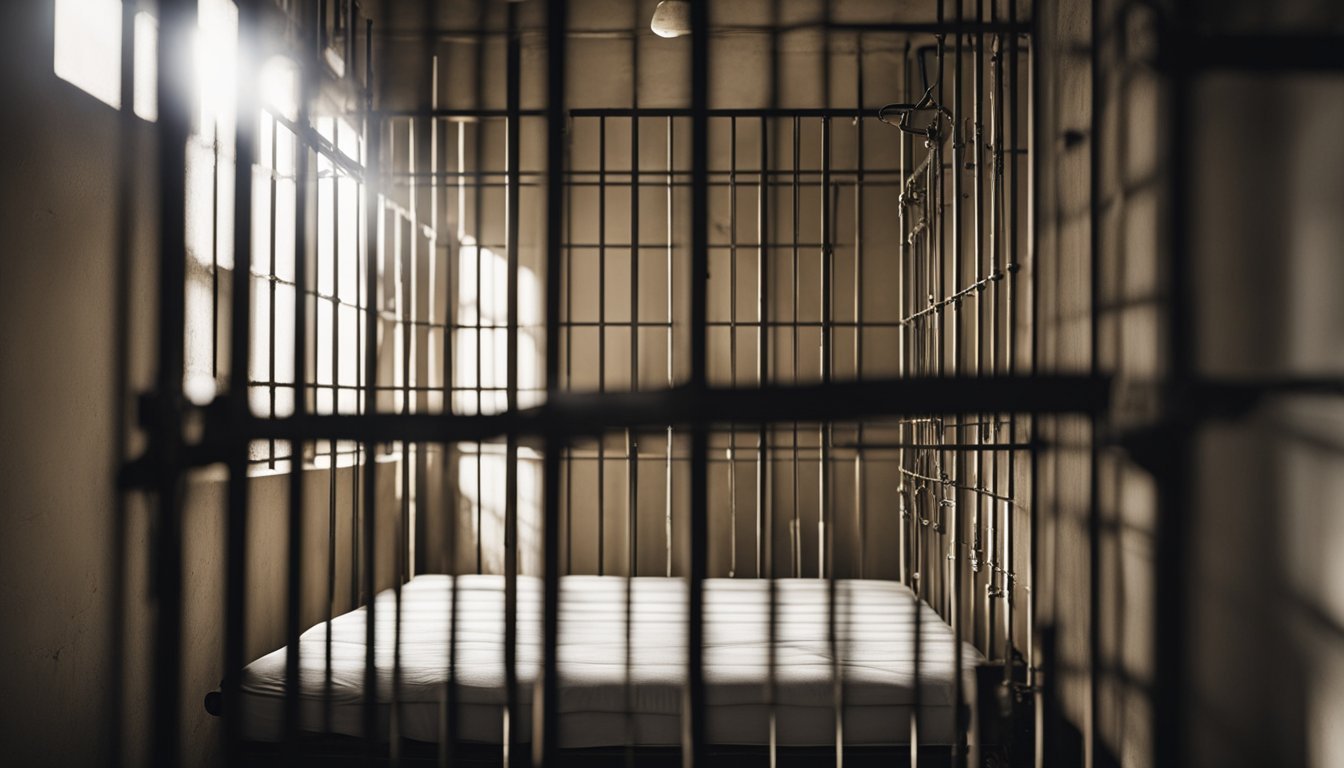Seymour Hersh's Investigative Reporting Uncovers Military Scandal at Abu Ghraib
Seymour Hersh's investigative reporting on the Abu Ghraib prisoner abuse scandal sent shockwaves through the world in 2004. His articles in The New Yorker exposed the disturbing mistreatment of detainees by U.S. military personnel at the Iraqi prison. Hersh's relentless pursuit of the truth revealed not only shocking photographs but also systemic issues within the military chain of command.
Hersh's journey to uncover the Abu Ghraib story began with confidential sources and meticulous fact-checking. His reputation as a Pulitzer Prize-winning journalist lent credibility to the explosive revelations. The abuse at Abu Ghraib included physical violence, sexual humiliation, and psychological torture of prisoners.
The impact of Hersh's reporting extended far beyond the initial scandal. It sparked international outrage, led to military investigations, and raised questions about U.S. detention policies in the War on Terror. Hersh's work on Abu Ghraib demonstrates the power of investigative journalism to expose wrongdoing and hold those in power accountable.
Seymour Hersh: Uncovering the Unseen
Seymour Hersh's relentless pursuit of truth has shaped modern investigative journalism. His groundbreaking reports have exposed major scandals and human rights violations, earning him widespread recognition and respect in the field.
Career Highlights and Awards
Seymour Hersh's career took off in 1969 when he broke the story of the My Lai massacre in Vietnam. This exposé earned him the Pulitzer Prize for International Reporting in 1970.
Hersh's investigative prowess continued to shine throughout his career. He uncovered numerous high-profile stories, including:
The secret U.S. bombing of Cambodia
The CIA's domestic spying program
The Abu Ghraib prisoner abuse scandal
His work has garnered multiple awards, including:
5 George Polk Awards
2 National Magazine Awards
The George Orwell Award
Reporting Style and Ethical Considerations
Hersh's reporting style is characterized by meticulous research and a network of confidential sources. He often relies on anonymous informants to uncover classified information and government misconduct.
This approach has led to both praise and criticism. Supporters laud his commitment to exposing wrongdoing, while critics question the reliability of unnamed sources.
Hersh maintains a strong ethical stance, prioritizing public interest over government secrecy. He argues that journalists have a responsibility to reveal information that affects national policy and public welfare.
His work on the Abu Ghraib scandal exemplifies this approach. Hersh's articles in The New Yorker brought widespread attention to prisoner abuse, sparking international outrage and policy changes.
The Road to Abu Ghraib: Historical Context
The Abu Ghraib prison scandal emerged from a complex backdrop of geopolitical tensions, military interventions, and shifting power dynamics in Iraq. This context set the stage for the events that would unfold within the prison walls.
Iraq's Political Landscape
Iraq's political landscape was dominated by Saddam Hussein's authoritarian regime for decades. His Baath Party maintained control through repression and violence against dissidents.
Ethnic and religious divisions simmered beneath the surface. Sunni Muslims held disproportionate power, while Shia Muslims and Kurds faced discrimination and persecution.
Economic sanctions imposed after the Gulf War crippled Iraq's economy. This fueled resentment toward Western powers, especially the United States.
American Intervention and War On Terror
The September 11, 2001 attacks reshaped American foreign policy. The Bush administration launched the "War on Terror," targeting al-Qaeda and its allies.
Iraq became a focus due to alleged ties to terrorism and weapons of mass destruction. Despite international opposition, the U.S. invaded Iraq in March 2003.
The initial military campaign swiftly toppled Saddam's regime. However, the lack of post-war planning led to a power vacuum and growing insurgency.
From Saddam's Regime to Baghdad's Chaos
The fall of Baghdad in April 2003 marked the end of Saddam's rule. Widespread looting and civil unrest followed as Iraqi institutions collapsed.
The U.S.-led Coalition Provisional Authority struggled to establish order. De-Baathification policies left many Iraqis unemployed and alienated.
Security deteriorated rapidly. Insurgent groups, including al-Qaeda in Iraq, launched attacks against coalition forces and civilian targets.
Abu Ghraib prison, once a symbol of Saddam's oppression, was reopened under U.S. control. It soon became overcrowded with suspected insurgents and criminals.
Abu Ghraib Prison: A Catalyst for Scandal
Abu Ghraib prison became the epicenter of a major scandal that shook the U.S. military and government. The facility's notorious reputation stemmed from shocking revelations of prisoner mistreatment and human rights violations.
Timeline of Abuse Discoveries
In late 2003, reports of detainee abuse at Abu Ghraib prison began to surface. U.S. Army Criminal Investigation Command launched an inquiry in January 2004.
The scandal gained international attention in April 2004 when CBS News aired photographs depicting American soldiers abusing Iraqi prisoners. These images showed detainees in humiliating positions, often naked and restrained.
Seymour Hersh's article in The New Yorker on May 10, 2004, further exposed the extent of the abuse. His reporting revealed systemic problems and command failures within the prison system.
Prisoner Treatment and Human Rights Violations
Detainees at Abu Ghraib faced various forms of mistreatment:
Physical abuse, including beatings and stress positions
Sexual humiliation and forced nudity
Sleep deprivation and sensory overload
Threats with dogs
These actions violated international laws and conventions on prisoner treatment. The Geneva Conventions, which outline standards for humane treatment of war prisoners, were repeatedly breached.
The abuse extended beyond physical harm. Psychological torture techniques, such as isolation and intimidation, were employed. Many detainees reported lasting trauma from their experiences.
Human rights organizations condemned the abuses, calling for investigations and accountability. The scandal raised questions about U.S. detention policies and military conduct in the Iraq War.
Unveiling the Atrocities: Seymour Hersh's Role
Seymour Hersh, a Pulitzer Prize-winning investigative journalist, played a pivotal role in exposing the prisoner abuse scandal at Abu Ghraib. His reporting for The New Yorker magazine brought the shocking events to light and sparked international outrage.
Breaking the Abu Ghraib Story
In 2004, Hersh published a series of articles in The New Yorker that revealed the extent of prisoner abuse at Abu Ghraib prison in Iraq. His reporting relied on confidential sources and leaked photographs that depicted U.S. military personnel humiliating and torturing Iraqi detainees.
Hersh's investigative skills and network of contacts allowed him to piece together the full scope of the scandal. He uncovered details about the systemic nature of the abuse and the attempts to cover it up within the military chain of command.
The photographs Hersh obtained served as damning evidence, leaving no doubt about the cruel treatment of prisoners. His articles provided a comprehensive account of the abuses, including sexual humiliation and physical violence.
The Aftermath of Publications
Hersh's exposé in The New Yorker had immediate and far-reaching consequences. The revelations sparked international condemnation and led to multiple investigations into the U.S. military's detention practices.
His reporting forced the Pentagon and Bush administration to address the scandal publicly. Several military personnel faced court-martial and conviction for their roles in the abuse.
Hersh continued to investigate the story, publishing follow-up articles and eventually a book titled "Chain of Command: The Road from 9/11 to Abu Ghraib." This work provided a broader context for the abuses, linking them to post-9/11 policies.
The Abu Ghraib story cemented Hersh's reputation as a fearless investigative journalist willing to challenge official narratives. His work on this scandal is considered a landmark in war reporting and government accountability.
Investigation and Media Coverage
Seymour Hersh's exposé of prisoner abuse at Abu Ghraib sparked widespread media attention and public outrage. His investigative work shed light on systemic issues within the U.S. military's detention practices during the Iraq War.
Role of Media in War Reporting
CBS News first broke the Abu Ghraib story on television, airing shocking photographs of prisoner mistreatment. Hersh's subsequent articles in The New Yorker provided in-depth analysis and context.
His reporting relied heavily on the Taguba Report, an internal military investigation. Hersh's work exemplified the crucial role of investigative journalism in uncovering government misconduct during wartime.
The media's coverage of Abu Ghraib challenged official narratives and raised questions about military oversight and accountability.
Impact of Hersh's Findings on Public Opinion
Hersh's articles in The New Yorker dramatically shifted public perception of the Iraq War. The vivid descriptions and photographic evidence of torture shocked the American public.
His reporting exposed a gap between stated U.S. values and actual practices in Iraq. This led to increased scrutiny of military operations and detainee treatment policies.
The Abu Ghraib scandal eroded public support for the war and damaged America's international reputation. Hersh's work sparked debates about human rights, military ethics, and the conduct of the war on terror.
Global Repercussions and Policy Changes
The Abu Ghraib scandal sparked widespread outrage and prompted significant changes in U.S. military policies. It damaged America's reputation, especially in the Muslim world, and led to reforms in detention practices.
Reforming Interrogation Methods
The Pentagon revised its interrogation guidelines following the Abu Ghraib revelations. These new rules explicitly prohibited many of the abusive tactics used at the prison.
Stress positions, sleep deprivation, and other harsh techniques were banned. The Army Field Manual was updated to reflect these changes, emphasizing humane treatment of detainees.
Training programs for military police and interrogators were overhauled. Greater emphasis was placed on ethical conduct and adherence to international law.
Legal and Diplomatic Fallout
The scandal resulted in multiple investigations and legal proceedings. Several low-ranking soldiers were court-martialed and imprisoned for their roles in the abuse.
Human Rights Watch and other organizations called for broader accountability, including for high-level officials. These demands were largely unmet, fueling criticism of the U.S. response.
Diplomatically, Abu Ghraib severely damaged America's standing in the Arab world. It undermined U.S. claims of promoting democracy and human rights in Iraq.
President Bush publicly condemned the abuses, but many felt the administration's response was inadequate. The scandal became a rallying point for anti-American sentiment globally.
The Pursuit of Accountability
The Abu Ghraib prisoner abuse scandal sparked intense scrutiny of military practices and ignited demands for accountability at all levels of command. Investigations and hearings aimed to uncover the full extent of the mistreatment and determine responsibility.
Military and Government Responses
The Pentagon launched multiple inquiries into the Abu Ghraib abuses. Major General Antonio Taguba conducted a thorough investigation, producing a scathing report that detailed systemic problems. His findings led to criminal charges against several low-ranking soldiers directly involved in the abuse.
Senior military leaders faced tough questions from Congress. Secretary of Defense Donald Rumsfeld testified before Senate committees, acknowledging the gravity of the situation. He offered his resignation to President Bush, who declined to accept it.
The CIA and other intelligence agencies came under scrutiny for their potential role in promoting harsh interrogation techniques. This led to debates about the definition and permissibility of torture in U.S. operations.
Challenges in Systemic Reform
Efforts to address the root causes of prisoner abuse faced significant obstacles. Critics argued that focusing solely on low-level perpetrators ignored broader policy failures and command responsibility.
Questions arose about the chain of command and who bore ultimate responsibility for the abusive practices. Some argued that senior officials who authorized enhanced interrogation methods should be held accountable.
Implementing lasting reforms proved difficult. Military culture, ingrained practices, and national security concerns complicated attempts to overhaul detention and interrogation policies. The debate over balancing human rights with perceived security needs continued long after the initial revelations.
Legal challenges to hold high-ranking officials accountable largely failed to gain traction in U.S. courts. This left many feeling that true accountability remained elusive, despite the intense public scrutiny and official investigations.
Comparative Analysis
Seymour Hersh's reporting on Abu Ghraib drew parallels to past military abuses. His investigative approach revealed patterns in how conflicts are covered and misconduct exposed.
Lessons from Historical Military Abuse
The Abu Ghraib scandal echoed previous instances of military misconduct. The Vietnam War's My Lai massacre stood out as a stark predecessor. Both cases involved the mistreatment of civilians and prisoners by American forces.
Key similarities included:
Initial attempts to cover up the incidents
The role of whistleblowers in exposing the truth
Public shock and outrage upon revelation
Debates on military culture and accountability
These events prompted discussions on the ethical conduct of warfare and the responsibilities of soldiers in conflict zones.
Seymour Hersh's Reporting on Past and Present Conflicts
Hersh's work on Abu Ghraib mirrored his earlier reporting on My Lai. His investigative techniques remained consistent:
Cultivating insider sources
Verifying information through multiple channels
Presenting findings with thorough documentation
In both cases, Hersh faced resistance from military officials. His persistence in uncovering the truth challenged official narratives.
The journalist's approach highlighted the importance of independent media in wartime. Hersh's reports on Abu Ghraib and My Lai forced America to confront uncomfortable realities about its military actions abroad.
Contemporary Relevance and Continuing Impacts
The Abu Ghraib scandal exposed deep flaws in military detention practices and reshaped public perceptions of the War on Terror. Its effects continue to reverberate today, influencing policies and journalistic approaches to uncovering abuses of power.
Ongoing Issues in Military Detention Practices
U.S. military detention practices remain under scrutiny. The Guantanamo Bay detention camp still operates, housing individuals without formal charges. Human rights organizations continue to raise concerns about interrogation techniques and indefinite detentions.
The Abu Ghraib revelations prompted reforms in military training and oversight. However, critics argue these changes have been insufficient to prevent future abuses. Incidents of detainee mistreatment have emerged in other conflict zones, suggesting systemic issues persist.
Debate continues over the balance between national security and human rights in military operations. The legacy of Abu Ghraib has made governments more cautious about detention policies, but tensions remain unresolved.
Hersh's Ongoing Contributions to Investigative Journalism
Seymour Hersh's work on Abu Ghraib reinforced his reputation as a preeminent investigative journalist. His methods and tenacity continue to influence reporters covering military and intelligence affairs.
Hersh has remained active in exposing controversial U.S. military and intelligence operations. His reports on topics like the raid on Osama bin Laden's compound have sparked intense debate and official pushback.
The digital age has transformed investigative journalism. Hersh's approach of cultivating insider sources faces new challenges and opportunities in an era of widespread electronic surveillance and data leaks.
Hersh's Abu Ghraib reporting serves as a case study in journalism schools. It demonstrates the impact of rigorous investigation in holding power accountable, even in highly sensitive national security contexts.



